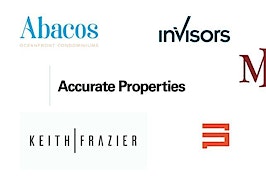- Prioritize your sign design. Keep signs simple and readable.
- Use the right font at the right size.
In the realm of real estate, yard signs have long held a steady place in marketing both homes and services. But how important are they really, and do today’s agents really need them?
The answer is a resounding yes, but only with good design.
A great sign is an invaluable marketing tool, as well as a simple way to build influence and brand awareness.
Often, these signs serve as a sole connection to individuals who aren’t currently in the buying or selling cycle and may never see your listings or ads.
Whether someone is actively looking for an agent or not, if that person drives by your sign on the way to work every day, he or she will remember you — especially if you have multiple signs along their commute.
If yard signs are so important, why are they often an afterthought when it comes to a rebrand?
It’s always shocking that agents have to be convinced to redesign their existing signs rather than just slapping the new logo on an old sign.
Agents don’t have to be told that yard signs are essential; they just have to understand how to make their signage work. It doesn’t cost any more to print a functional sign that will bring business than it does to print a sign that won’t be effective.
So what sets good signs apart from the bad? Before we delve into our suggestions, let’s discuss what doesn’t work.
There is a small sign in a huge lot that I pass every day that advertises the lot for sale (I think).
However, I’m confident that if it weren’t my job to notice it, I never would have. I can barely see it from the road and would need to pull over to be able to read it at all.
If I were in the market for land, I would not have the first clue how to contact someone about this particular lot. What’s worse, is it isn’t even clear who the agent is or what the brokerage firm is. The only thing that is actually visible on the sign? A generic key.
In short, this sign has failed, but these four tips could have ensured its success.
1. Keep it simple
Of course, this applies to all marketing, as usually space is limited.
The more information there is, the harder it will be for the reader to absorb it.
Before you decide to add a website, name, phone number, or other details, figure out the size of your sign and what you wish to accomplish.
The sign below has a rider above and below, which allowed us the freedom to incorporate color and a large URL. Ultimately, this kept it very simple, but still memorable and recognizable.

In the case of the open house sign below, its purpose was to convey the brand, tell you there is an open house and point you in that direction. If it captured the attention of drivers and tells them what to do, then the sign was effective.

Ultimately, you must design for drivers, not pedestrians. A driver can’t stop and stare at all the elements on a sign, so being bold is a must.
2. The bigger the better
You may want to catch a screen grab of that, as it’s something you typically won’t hear me say when discussing design.
In the case of a sign, it’s essential to go big on the important information to ensure that it’s readable and gets seen.

3. Always use legible fonts
I don’t care how great you think a font is, if it isn’t legible, don’t use it.
A good test is to print the sign at 100 percent and see if you can read it from 20 feet away.
If you can’t, it’s time to find another font. Helvetica Neue and Futura are excellent options if you prefer san-serif fonts, and Museo or Bodoni Std are best if you prefer serif fonts.

4. Use color to highlight
Whether it’s used to draw the eye to the entire sign or simply highlight certain information, color allows us to make signs more effective.
However, that doesn’t mean you should go overboard. There is a right way to use color to enhance key details. In the example below, the phone number is highlighted by incorporating a color block.

Where there is real estate to be sold, there will always be signs — good and bad. Hopefully with these tips you’ll prioritize quality design in your signage, increasing the effectiveness of your marketing in the process.
Laura Ure is the CEO of Keenability, a marketing agency specializing in lifestyle marketing that targets the affluent buyer. Follow her on Facebook or Twitter.







